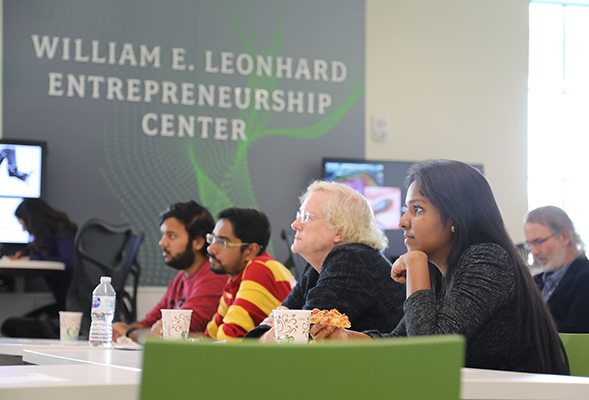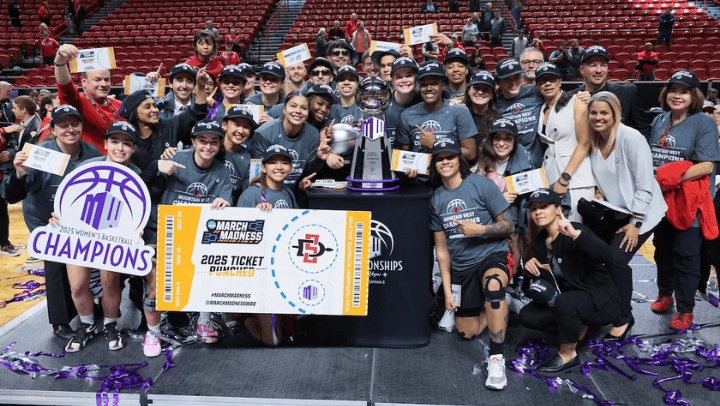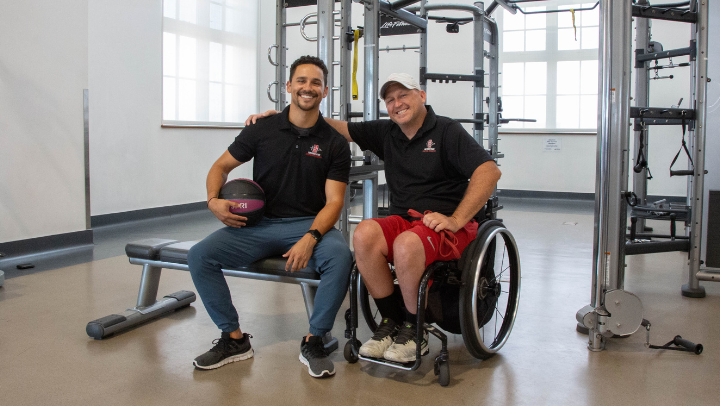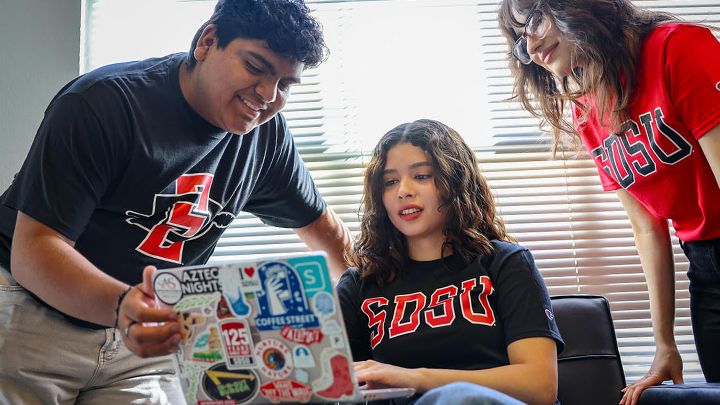Power Input: Women in STEM Series Makes Critical Connections
Former Purdue dean Leah Jamieson, a leader in the male-dominated field of engineering, met with students in an event aimed at making SDSU part of the change.

Jade Sommers has had her share of obstacles, demanding classes and moments of self-doubt during her time at San Diego State University.
Yet the senior mechanical engineering major has a strategy for those difficult moments: she thinks about the women who have blazed the trail before her, who study alongside her at SDSU and who will one day follow in her footsteps.
“It’s really motivating to see other people like me in the field,” Sommers said. “There’s definitely been times when I’ve questioned continuing engineering, but just seeing other women doing what I want to do is encouraging.”
Sommers was able to add another woman to her list of role models this week during SDSU’s second annual Women in STEM Seminar series: Leah Jamieson, a national leader in engineering education and former dean of Purdue University’s top-ranked engineering school.
Jamieson visited campus Oct. 27-29 to discuss her experience in engineering education and the experience of women in engineering and other STEM fields with SDSU students, faculty and administrators.
Although their numbers are slowly gaining, women are underrepresented in engineering—in both the field and the classroom. The National Center for Education Statistics found that 21% of California’s engineering degrees in 2017 were awarded to women. (Meanwhile, 18.3% of SDSU engineering degrees were awarded to women last year.)
Reports from industry organizations and the National Academy of Engineering in the early 2000s found significant gender gaps in engineering education. In response, Jamieson and fellow researchers developed innovative approaches that have tangible benefits for all students. Creating meaningful service-learning experiences, for example, improves the retention of underrepresented engineering students, including women.
The motivations for students to pursue engineering are different for men and women, as are the markers of success. Jamieson cited research that having access to leadership roles is more likely to indicate success among women, while high school coursework is a stronger indicator for men.
“We had the chance to learn from one of the leaders in the field. It’s so important that SDSU be a part of the changes and improvements in engineering education as we develop the next generations of faculty and students,” said biology professor Rebecca Lewison, who helps organize the annual Women in STEM Seminar series.
“This series provides direct access to exceptional women scientists and engineers—one-on-one access that would be difficult to get in other settings. That really has the potential to transform faculty and students.”
Jamieson encouraged students and faculty to seek out spaces where they can discuss their experiences and support one another.
“There are still relatively few women in engineering,” Jamieson said, recalling how she was one of just two women in her graduate program and one of just three female engineering faculty when she first joined Purdue decades ago.
“You need that opportunity to be reinforced and to belong to something,” she continued. “This never stops being important, no matter where you are or how senior you are. I still find myself seeking out opportunities to connect with women in my field.”
For Sommers, finding such spaces has been critical.
As president of SDSU’s 120-member Society of Women Engineers (SWE) chapter, Sommers has developed the confidence to stand up for herself and other female engineers, she says. She’s also found inspiration from one of her mentors, engineering design lecturer Vanita Murthy.
“We share a common goal,” she explained. “That’s what encourages me the most to continue my training and make sure I can help provide people with opportunities I’ve had or wish I had the chance to have."



